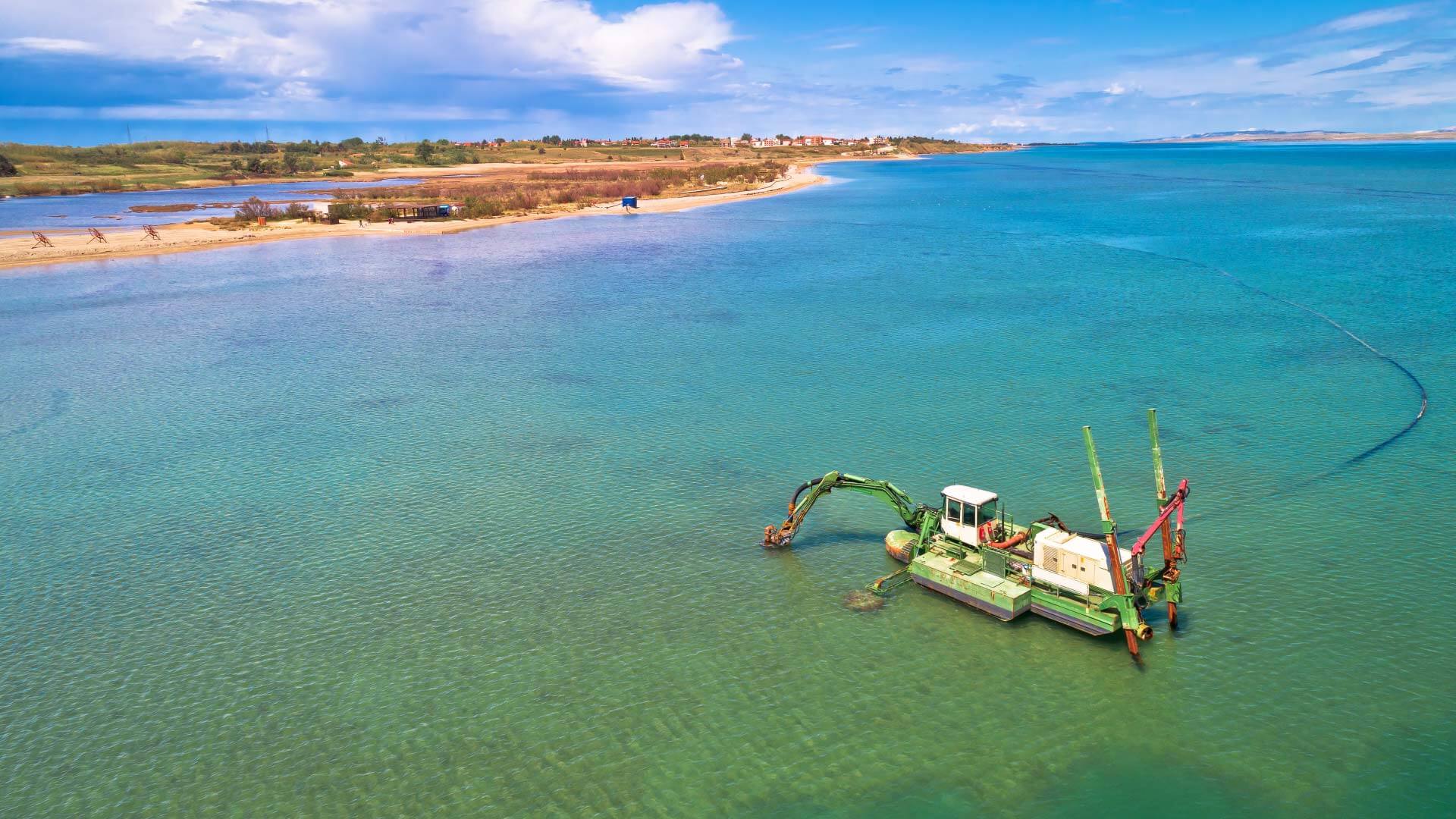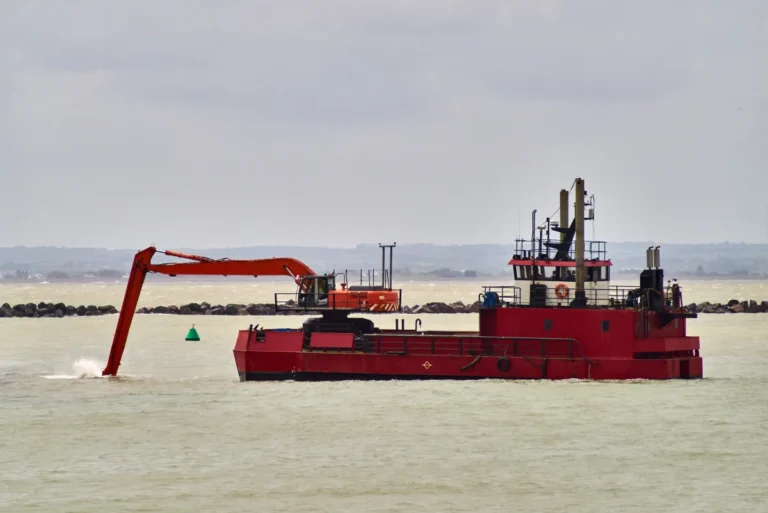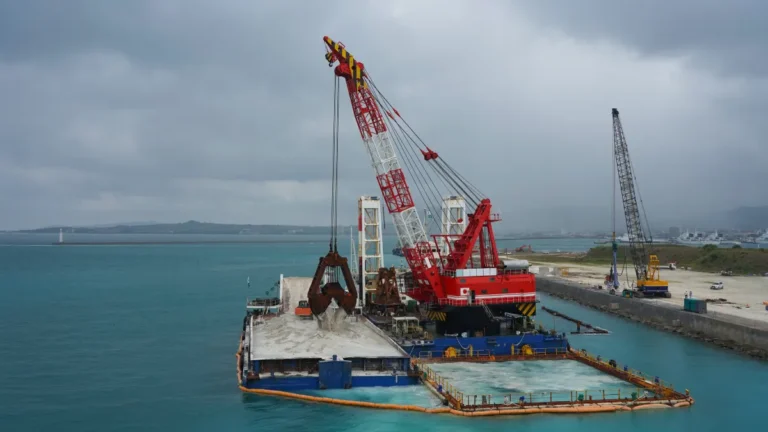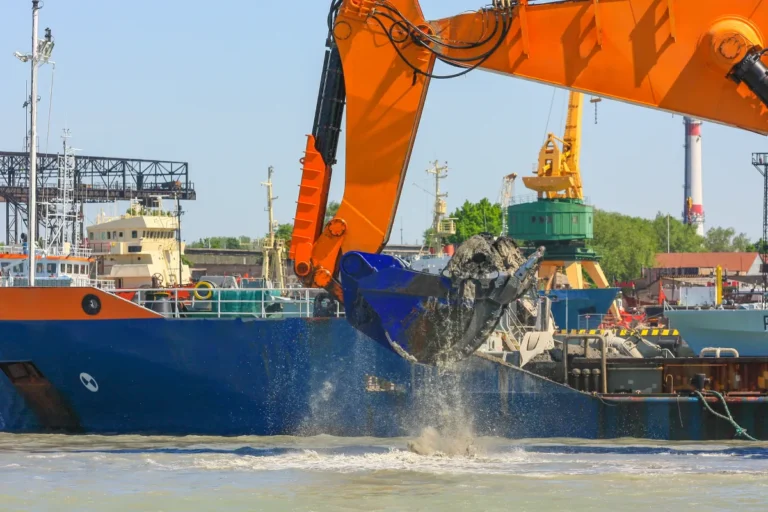Lagoon dredging is essential for maintaining the health and functionality of various lagoons, including industrial, wastewater treatment, and stormwater retention lagoons. Over time, sediment, sludge, and organic matter accumulate, reducing water depth, degrading water quality, and creating environmental hazards. Effective lagoon dredging restores proper water flow increases storage capacity and prevents issues like harmful algal blooms and poor water circulation.
Choosing the right dredge for lagoon projects is key to maximizing efficiency and reducing costs. The type of dredge pump impacts dredging speed, sediment handling capacity, and maintenance requirements. Factors such as sediment type (e.g., soft sludge, sand, or clay), lagoon depth, and project size must be carefully evaluated. Environmental considerations, including turbidity limits and local regulations, also play a crucial role in determining the best dredging solution. Selecting the right pump ensures optimal performance, reduced operational costs, and minimal environmental impact.
Understanding Lagoon Dredging
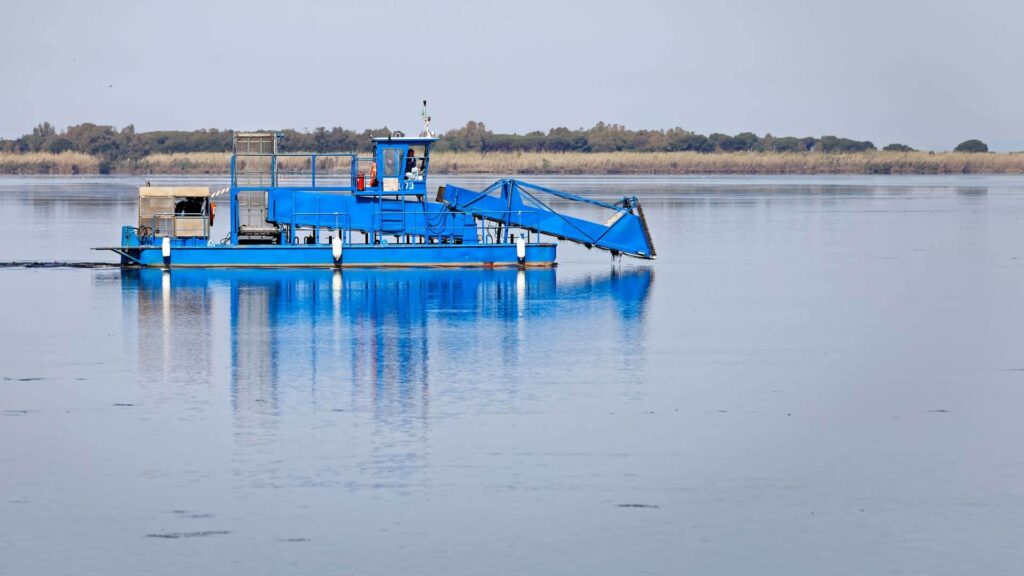
What is Lagoon Dredging?
Lagoon dredging refers to the process of removing accumulated sediment, sludge, and organic material from lagoons to restore their capacity, improve water quality, and maintain overall ecosystem health. Over time, lagoons naturally collect debris, silt, and organic matter, which can reduce water depth and create imbalances in water chemistry. This buildup can lead to poor water circulation, increased nutrient levels, and the growth of harmful bacteria or algae.
The primary goal of lagoon dredging is to remove these accumulated materials, restore the lagoon’s depth, and enhance its ability to manage water flow and waste treatment effectively. This process is essential for maintaining the lagoon’s function, whether it is being used for industrial purposes, stormwater management, or wastewater treatment.
Common applications of lagoon dredging include:
- Wastewater treatment lagoons – Removing sludge buildup to maintain proper processing capacity and prevent overflow.
- Industrial lagoons – Managing byproducts and sediment from manufacturing or processing activities.
- Stormwater retention ponds – Preventing siltation and maintaining flood control capacity.
By regularly performing dredging operations, operators can ensure that lagoons function efficiently and remain compliant with environmental regulations.
Challenges Specific to Lagoon Dredging
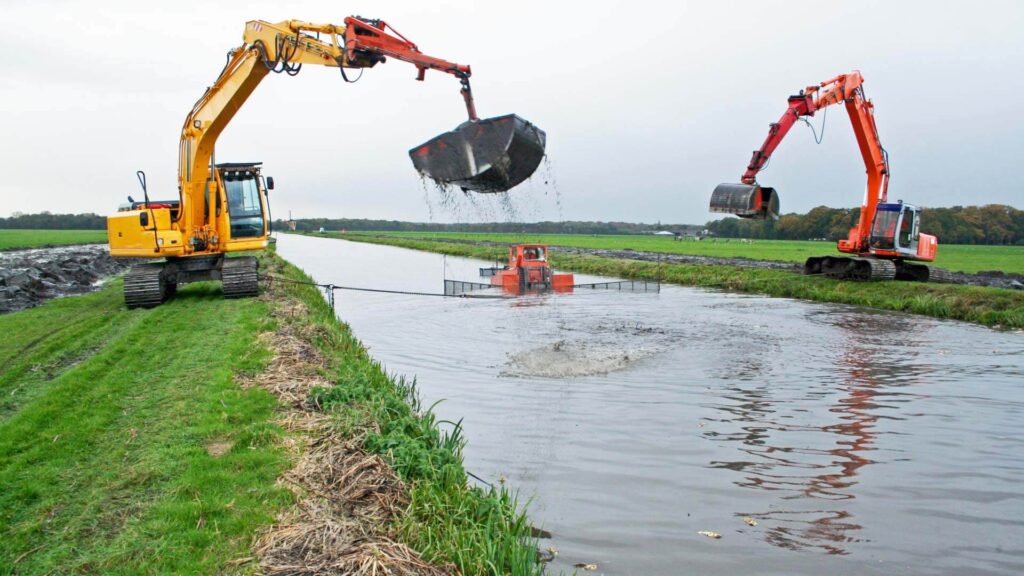
While lagoon dredging is essential for maintaining proper function, it comes with unique challenges that require careful planning and the right equipment.
- Shallow Water Conditions
Many lagoons are relatively shallow, which limits the type of dredging equipment that can be used. Standard dredge pumps may struggle to operate effectively in shallow water, making it essential to select a specialized dredge for lagoon projects that can handle low water levels while maintaining consistent suction and discharge capacity.
- Fine Sediment, Sludge, and Organic Material
Lagoon dredging often involves handling soft, cohesive materials such as sludge and organic matter. These materials can be difficult to pump due to their viscosity and tendency to clog standard pumps. Selecting a dredge pump with a non-clogging impeller and high suction power is crucial for effective material removal in industrial lagoon dredging projects.
- Environmental Regulations and Sediment Disposal Requirements
Many lagoons have strict environmental regulations governing sediment removal and disposal. Disturbing the lagoon bed can increase turbidity and release harmful nutrients or contaminants into the water column. Therefore, dredging operations must minimize environmental disruption while adhering to guidelines for sediment disposal and water quality.
Overcoming these challenges requires choosing the right dredge pump, considering factors such as sediment type, water depth, and environmental impact. Properly matched equipment ensures efficient material removal and long-term lagoon performance.
Types of Dredge Pumps for Lagoon Dredging
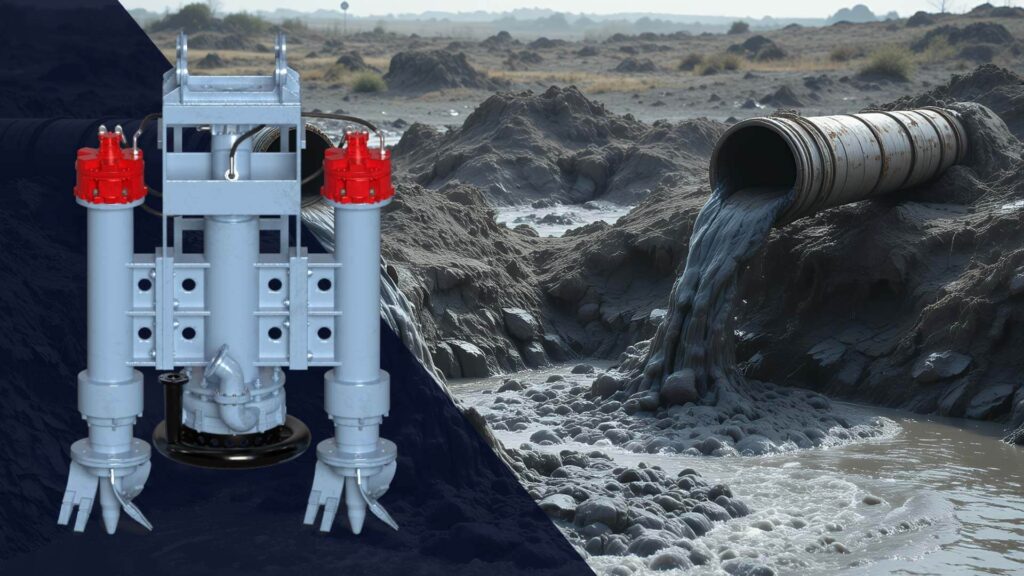
Selecting the right dredge pump is critical for achieving efficient and effective lagoon dredging. Different types of dredge pumps are designed to handle varying sediment types, depths, and operational conditions. Understanding the advantages and limitations of each type of pump helps in choosing the most suitable dredge for lagoon projects.
Hydraulic Dredge Pumps
Hydraulic dredge pumps are among the most commonly used solutions for lagoon dredging because they efficiently handle large volumes of sediment and water. These pumps use hydraulic pressure to create suction and move material through a discharge pipeline.
How hydraulic pumps operate:
- A hydraulic motor powers the impeller, creating a suction that draws sediment and water into the pump.
- The mixture of water and sediment is transported through a pipeline to a designated discharge location.
Advantages in handling large volumes of sediment and water:
- Capable of moving high concentrations of solids over long distances.
- High pumping efficiency reduces operational costs and dredging time.
- Suitable for continuous operation in large-scale dredging projects.
Suitability for fine and cohesive materials in lagoons:
- Effective for soft sludge, organic matter, and fine silt.
- The hydraulic mechanism allows for consistent suction even with varying sediment consistencies.
- Ideal for deep or large lagoon projects where high pumping power is required.
Submersible Dredge Pumps
Submersible dredge pumps are designed for shallow water conditions and confined spaces, making them highly effective for smaller lagoons or areas with limited access. During operation, they are fully submerged in water, allowing them to contact sediment and efficiently remove material directly.
How submersible pumps work:
- The pump is positioned directly at the sediment bed.
- An electric or hydraulic motor drives the impeller, creating suction that lifts sediment and water.
- The mixture is discharged through a connected pipeline or hose.
Ideal for shallow water conditions and confined spaces:
- Capable of operating in low water levels where other pump types may struggle.
- The compact size allows for easy deployment and maneuvering in restricted areas.
- Effective for spot dredging or localized sediment removal.
Flexibility in handling varying sediment consistencies:
- It can handle a mix of soft sludge, fine silt, and even small debris.
- Some models feature agitators or cutter heads to break up compacted material.
- High versatility makes them suitable for both industrial and environmental lagoon dredging.
Cutter Suction Dredge Pumps
Cutter suction dredge pumps are equipped with a rotating cutter head that breaks up compacted sediment. This allows the pump to remove more challenging materials such as clay, hard-packed silt, and debris. These pumps are particularly effective for industrial lagoon dredging, where tougher sediment conditions are common.
Mechanism of operation:
- A rotating cutter head dislodges sediment and feeds it into the suction inlet.
- The pump creates suction, drawing the sediment and water mixture into the system.
- The material is transported through a discharge pipeline to a designated disposal site.
Best suited for more compacted or clay-like sediments:
- Effective for hard-packed or consolidated materials that standard pumps may struggle to remove.
- The cutter head improves efficiency by breaking up sediment before pumping.
- Suitable for lagoons with a mix of soft and hard materials.
Applications in industrial lagoon dredging:
- Commonly used in industrial waste lagoons where sediment buildup includes hard particles and compacted sludge.
- High efficiency and cutting power make it ideal for heavy-duty dredging projects.
- Capable of handling large volumes of sediment with minimal downtime.
Understanding the different dredge pump options allows project managers to select the most efficient and cost-effective solution for specific lagoon dredging challenges. Whether handling soft sludge or compacted clay, the right dredge pump ensures reliable material removal and improved lagoon performance.
Key Performance Factors in Lagoon Dredging
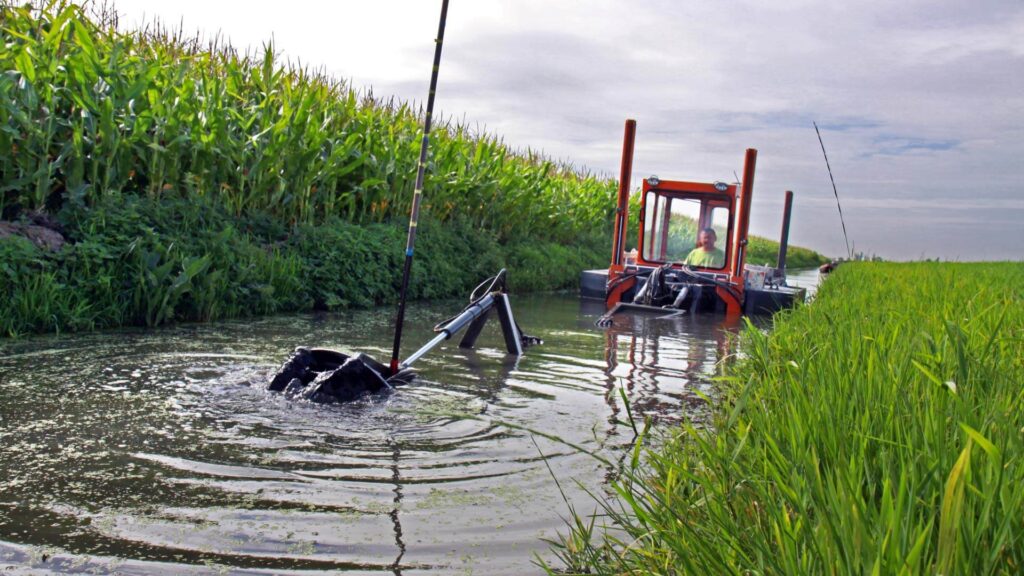
Selecting the right dredge pump for lagoon dredging requires a deep understanding of key performance factors that directly impact efficiency, operating costs, and overall project success. The right combination of pump capacity, flow rate, efficiency, and suction power ensures that the pump can handle the specific challenges of industrial lagoon dredging while maintaining consistent performance and minimizing downtime.
Pump Capacity and Flow Rate
Matching the pump’s capacity and flow rate to the size of the lagoon and the volume of sediment to be removed is essential for maximizing efficiency in lagoon dredging projects. A pump that is too small will struggle to keep up with material demands, leading to increased wear and prolonged project timelines. On the other hand, an oversized pump may consume unnecessary energy and increase operating costs without providing meaningful efficiency gains.
Importance of matching the pump’s flow rate to the size of the lagoon and sediment volume:
- Larger lagoons and higher sediment loads require higher flow rates to maintain steady removal.
- Pump capacity is typically measured in gallons per minute (GPM) or cubic meters per hour (m³/h).
- A properly matched flow rate ensures steady progress without overloading the pump.
How to calculate the required flow rate based on lagoon size and dredging depth:
- Estimate the total volume of material to be removed (length x width x average depth).
- Factor in sediment density and consistency. Finer sediments, like sludge, will require a different flow rate than heavier materials, like clay or sand.
- Select a pump with a flow rate that matches the sediment removal target within the desired project timeline.
- Adjust for head pressure loss over distance if the discharge site is far from the dredging location.
Pump Efficiency
Pump efficiency directly impacts the cost and performance of lagoon dredging operations. An efficient pump minimizes energy consumption while maximizing material removal, leading to faster project completion and lower operating costs.
Impact of pump efficiency on energy consumption and operating costs:
- High-efficiency pumps consume less fuel or electricity, reducing overall energy costs.
- An efficient pump produces less heat and wear, extending the lifespan of internal components.
- Reduced energy consumption lowers the environmental impact of dredging operations.
Factors that improve efficiency:
- Impeller Design: Open impellers are more effective for fine sediment and sludge, while closed impellers are ideal for larger particles and debris.
- Pump Material: High-chrome alloys and abrasion-resistant coatings help reduce wear and maintain efficiency over time.
- Motor Type: Variable-speed motors allow for better control over flow rates and power output, improving overall energy management.
- Wear Resistance: Pumps with reinforced components reduce the need for maintenance and improve long-term performance.
Head Pressure and Suction Power
Head pressure and suction power determine how effectively a pump can lift sediment from the lagoon floor and transport it to a discharge site. This is particularly important in industrial lagoon dredging, where heavier and more compacted materials may be present.
The role of head pressure in moving sediment over long distances:
- Head pressure refers to the resistance the pump must overcome to move sediment through the discharge pipeline.
- Higher head pressure is required when transporting sediment over long distances or through elevation changes.
- Insufficient head pressure can lead to blockages and loss of suction, slowing down the dredging process.
Matching suction power to sediment density and composition:
- Fine sediment and sludge require higher suction power to maintain consistent flow.
- Compact materials like clay and sand may require a cutter head or agitator to loosen the material before pumping.
- Pumps designed for high-viscosity material handling are better suited for heavy-duty lagoon dredging projects.
Carefully balancing these performance factors ensures that the dredge selected for lagoon operations delivers consistent, efficient, and reliable results. A well-matched pump improves dredging efficiency and reduces long-term maintenance and operational costs.
Selecting the Right Dredge for Lagoon Conditions
Choosing the right dredge pump for lagoon dredging requires a thorough understanding of the specific conditions and challenges presented by the lagoon environment. Factors such as sediment type, lagoon size, and environmental regulations all play a crucial role in determining the most effective and efficient dredging solution. Properly matching the dredge pump to these conditions ensures smoother operations, reduced downtime, and better long-term results.
Sediment Type and Consistency
The type and consistency of sediment in the lagoon have a significant impact on dredging efficiency and pump performance. Sediment can range from soft mud and silt to more cohesive organic sludge or compacted clay, each requiring different dredge pump configurations to handle effectively.
Soft mud, silt, and organic sludge require different pump configurations:
- Soft mud and silt – Require pumps with high suction power and larger passageways to prevent clogging.
- Organic sludge – Viscous materials require pumps with a higher solids handling capacity and non-clog impellers.
- Compacted clay – This may require cutter heads or agitators to loosen material before it can be pumped effectively.
Importance of selecting the right impeller type for the sediment profile:
- Open impellers – Best for handling fine sediment and sludge as they reduce clogging and improve flow consistency.
- Closed impellers – Better for handling sand and larger particles, providing higher efficiency under high-pressure conditions.
- Cutter heads – Essential for industrial lagoon dredging where compacted material requires mechanical agitation to loosen sediment before pumping.
By understanding the sediment profile, project managers can select a dredge for lagoon applications that maximizes both material removal and pump longevity.
Lagoon Size and Depth
The size and depth of the lagoon directly affect the type and capacity of the dredge pump needed for the project. Shallow lagoons and deep industrial lagoons present different dredging challenges, requiring tailored equipment solutions.
Shallow lagoons may require specialized pumps with low head pressure but high suction capability:
- Submersible pumps are ideal for shallow lagoons since they operate directly on the lagoon floor and require minimal water depth.
- Low-head pressure pumps are more effective for shallow water conditions, reducing the risk of cavitation and pump damage.
- Smaller, more maneuverable dredges are preferred for precision dredging in confined spaces.
Large industrial lagoons may need higher-capacity pumps to handle large volumes efficiently:
- Hydraulic dredge pumps are better suited for large lagoons, offering higher flow rates and greater discharge distance capabilities.
- Cutter suction dredges are ideal for industrial lagoon dredging, where sediment may be compacted or mixed with debris.
- High-powered pumps with durable materials and larger impeller sizes improve efficiency when handling large volumes of sediment.
Selecting the right pump for the lagoon size and depth ensures that the dredging process remains efficient and cost-effective.
Environmental and Regulatory Considerations
Environmental impact and regulatory compliance are critical factors in any lagoon dredging project. Disrupting the sediment bed can increase turbidity, release nutrients, and affect local aquatic ecosystems. Careful planning and the right dredge pump can minimize environmental disruption while ensuring regulatory compliance.
Compliance with local and federal environmental regulations:
- Many jurisdictions have strict regulations governing sediment removal, turbidity levels, and discharge quality.
- Permit requirements may specify allowable dredging times, methods, and sediment disposal protocols.
- Selecting an environmentally friendly dredge for lagoon operations can help ensure compliance and avoid fines.
Importance of minimizing turbidity and protecting aquatic life:
- Pumps with low-turbulence designs help reduce the disturbance of fine sediments.
- Using silt curtains or turbidity barriers can prevent suspended sediments from spreading into adjacent waters.
- Slow, steady dredging with the right suction power helps avoid stirring up contaminants or disrupting aquatic ecosystems.
Careful attention to environmental and regulatory considerations ensures that industrial lagoon dredging projects proceed smoothly while minimizing environmental impact.
Maintenance and Longevity Considerations
Ensuring the long-term performance and reliability of a dredge pump in lagoon dredging projects requires careful attention to maintenance and material selection. The harsh conditions of industrial lagoon dredging — including abrasive sediments, corrosive water, and varying material consistency — can cause premature wear and breakdown if the pump is not properly designed and maintained. Selecting a durable pump with efficient maintenance features reduces downtime, extends equipment lifespan, and improves overall operational efficiency.
Wear Resistance and Material Selection
The materials used to construct a dredge pump significantly impact its ability to withstand the abrasive and corrosive conditions commonly found in lagoon dredging environments. Sediments such as sand, silt, and sludge can accelerate wear on the pump’s internal components. If the pump is not constructed with wear-resistant materials, this leads to increased maintenance and reduced performance.
Importance of pump material (e.g., high-chrome alloys) in resisting wear from abrasive sediments:
- High-chrome alloys – Provide excellent resistance to abrasion and corrosion, making them ideal for handling sandy or gritty materials.
- Stainless steel – Offers corrosion resistance, particularly in lagoons with high acidity or salinity levels.
- Polyurethane coatings – Improve resistance to chemical exposure and reduce the risk of erosion.
Role of protective coatings and impeller design in extending pump life:
- Protective coatings on the pump casing and impeller reduce friction and wear, improving long-term performance.
- Closed impellers are more resistant to wear when handling coarse or sandy sediments.
- Rubber-lined casings help absorb impact from debris and abrasive particles, protecting the pump structure.
Choosing the right materials and coatings for the dredge pump ensures that it can handle the lagoon’s specific sediment and water conditions without premature failure.
Ease of Maintenance and Downtime Reduction
Minimizing downtime is essential for maximizing the efficiency and cost-effectiveness of a lagoon dredging project. A dredge pump that is easy to service and repair reduces labor costs and keeps operations running smoothly.
Quick-change impeller designs and modular construction:
- Impellers that are easy to remove and replace allow for faster maintenance and reduced downtime.
- Modular pump designs enable quick swapping of worn-out components without the need for specialized tools.
- Interchangeable wear parts reduce costs by allowing individual component replacement instead of full system replacement.
Importance of accessible service points for faster maintenance:
- Pumps designed with external access ports simplify maintenance by allowing inspection and repairs without full disassembly.
- Easy access to critical components like the impeller, shaft, and seals reduces service time.
- Some pumps feature self-cleaning mechanisms that reduce the need for manual maintenance.
Designing the dredge pump for ease of maintenance reduces operational interruptions and improves long-term reliability in industrial lagoon dredging projects.
Monitoring and Performance Tracking
Installing a monitoring system helps operators track the dredge pump’s performance in real-time. This allows for early detection of issues and proactive maintenance. Monitoring systems improve operational efficiency by providing detailed insights into pump performance and wear.
Benefits of installing remote monitoring systems to track flow rate, pressure, and wear:
- Real-time tracking of flow rate and pressure ensures that the pump is operating within its optimal performance range.
- Monitoring sediment concentration helps adjust suction power and flow rate for improved material handling.
- Remote access to performance data allows for immediate response to any drops in efficiency or potential failures.
Predictive maintenance strategies to minimize unexpected downtime:
- Performance tracking allows operators to predict wear rates and schedule maintenance before failure occurs.
- Data-driven maintenance planning reduces the need for emergency repairs and extends the pump’s lifespan.
- Some advanced monitoring systems provide automatic alerts when pressure drops or wear levels exceed preset thresholds.
By combining durable construction, efficient maintenance design, and real-time monitoring, operators can extend the lifespan of their dredge pump and improve overall efficiency in lagoon dredging projects.
Cost and ROI Considerations
Investing in the right dredge pump for lagoon dredging is a strategic decision that affects both short-term project costs and long-term operational efficiency. While upfront costs are an important consideration, the total return on investment (ROI) is determined by the pump’s ability to perform efficiently over time. Factors such as fuel consumption, maintenance costs, and project timelines all contribute to the overall profitability of industrial lagoon dredging projects. Carefully evaluating both initial and long-term costs ensures that the selected pump provides maximum value and operational performance.
Initial Investment vs. Long-Term Performance
Balancing the initial purchase cost of a dredge pump with long-term performance is essential for maximizing ROI in lagoon dredging projects. While a lower-cost pump may seem attractive initially, it can lead to increased maintenance costs, higher fuel consumption, and shorter lifespan — all of which reduce overall profitability.
How to balance upfront costs with long-term operating efficiency:
- Higher-quality pumps made from wear-resistant materials (e.g., high-chrome alloys) may have a higher initial cost but require less maintenance and offer longer service life.
- Energy-efficient pumps reduce fuel or electricity costs over time, resulting in significant operational savings.
- Investing in pumps with modular construction and easily replaceable parts reduces repair costs and downtime.
- Advanced impeller designs and optimized flow channels improve efficiency, reducing wear and increasing sediment removal rates.
ROI factors: fuel consumption, maintenance costs, and lifespan:
- Fuel Consumption – High-efficiency pumps consume less fuel or electricity, lowering operational costs over the lifespan of the project.
- Maintenance Costs – Pumps with fewer moving parts and wear-resistant materials require less frequent maintenance, reducing labor and replacement costs.
- Lifespan – Pumps constructed from corrosion- and abrasion-resistant materials last longer, providing better long-term value and reducing the need for costly replacements.
Investing in a high-quality dredge for lagoon operations ensures consistent performance and lower lifecycle costs, ultimately improving ROI.
Operational Efficiency and Project Timelines
The efficiency of the dredge pump directly impacts the speed and cost of the dredging project. More efficient pumps can remove sediment faster, reduce labor costs, and shorten project timelines — all of which contribute to increased profitability.
How efficient pumps reduce dredging time and labor costs:
- High-flow-rate pumps reduce the time needed to remove sediment, allowing projects to be completed faster.
- Efficient suction power minimizes the need for secondary passes over the same area, reducing labor hours and fuel consumption.
- Pumps designed for consistent operation under varying sediment loads reduce the risk of clogging and downtime.
Impact of reducing project timelines on overall profitability:
- Faster project completion reduces labor costs and equipment rental fees.
- Completing projects ahead of schedule improves client satisfaction and increases the potential for repeat business.
- Reduced operational time allows the equipment to be deployed on additional projects, maximizing return on investment.
Selecting a high-efficiency dredge pump for industrial lagoon dredging ensures faster project completion, lower operational costs, and higher profitability. A well-balanced pump selection strategy considers both immediate and long-term costs, ensuring optimal financial performance across multiple dredging projects.
Conclusion
Selecting the right dredge pump for lagoon dredging is essential for ensuring efficient sediment removal, minimizing operating costs, and maintaining long-term equipment performance. By carefully evaluating factors such as sediment type, lagoon size, pump capacity, and environmental regulations, project managers can choose a dredge for lagoon operations that maximizes productivity and reduces downtime. High-quality materials, efficient impeller designs, and advanced monitoring systems further enhance performance and longevity, delivering a strong return on investment. Ultimately, investing in the right dredge pump for industrial lagoon dredging leads to faster project completion, lower maintenance costs, and improved overall profitability.


